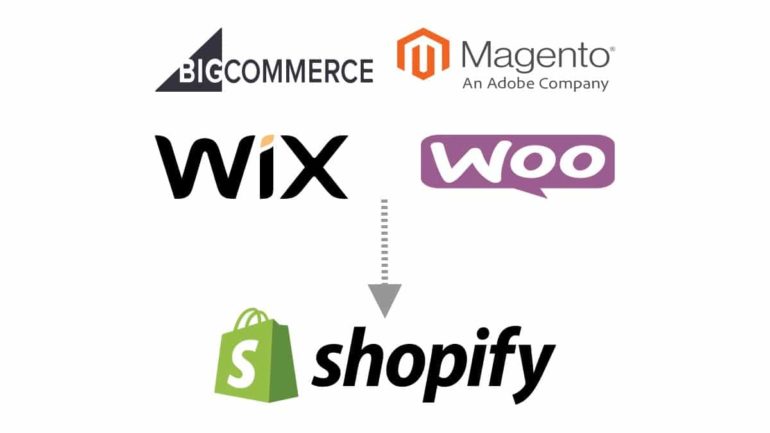Thinking about migrating your online store to Shopify? Great choice! Shopify is a robust and user-friendly platform that can take your business to new heights. However, before you make the move, there are a few important things to consider. In this blog post, we will walk you through some key factors you should keep in mind when migrating from any e-commerce platform to Shopify.

Shopify migration
1. Data Migration
The first and most crucial aspect of migration is transferring your existing data to Shopify. This includes important elements such as product information, customer data, order history, and more. Take the time to audit and clean up your data before the migration process to ensure a smooth transition. You can use Shopify’s built-in migration tools or consider seeking professional assistance to handle this critical step.
2. Design and Theme
Design plays a vital role in attracting and engaging customers. When migrating to Shopify, it’s essential to consider how your current website design will transition to Shopify’s themes. Explore Shopify’s vast collection of themes and select one that aligns with your brand identity and provides the functionality you require. Customization options are also available—consider hiring a designer or developer to create a unique and cohesive look for your Shopify store.
3. SEO and URL Structure
Maintaining your search engine rankings during a migration is essential for your online store’s visibility. Shopify offers built-in SEO tools, but migrating platforms requires careful attention to detail to preserve your current SEO settings. Ensure that your new URL structure matches or redirects from your old one to avoid broken links and loss of search rankings. Consider creating a 301 redirect plan to guide users and search engines to the new URLs.
4. Product Variants and Attributes
If your current e-commerce platform supports complex product variants and attributes, ensure that Shopify can accommodate the same level of complexity. Shopify offers a range of options for product variations, but it’s important to verify that your specific requirements can be met. Test the migration process for a few example products to ensure all variant options are properly transferred.
5. Third-Party Integrations
Before migrating, make a list of any third-party apps or integrations your current platform relies on. Shopify has an extensive App Store offering various integrations for inventory management, email marketing, CRM, and more. Research and evaluate the availability and compatibility of these integrations on Shopify. If a specific integration is critical to your business, ensure it is available or look for alternatives that can meet your requirements.
6. Cost and Pricing Structure
Consider the cost implications of migrating to Shopify. Evaluate Shopify’s pricing structure and make sure it aligns with your budget and future growth plans. Take into account any additional costs for themes, apps, and customization. Calculate the potential return on investment based on the features and benefits you’ll gain from moving to Shopify. Conclusion
Migrating to Shopify can be an exciting and rewarding decision for your online business. By carefully considering these factors—including data migration, design and theme customization, SEO preservation, product variants, third-party integrations, and cost—you can ensure a smooth and successful transition. Take the time to plan and execute your migration strategy, and enjoy the benefits of Shopify’s powerful e-commerce platform to grow your online business. Contact Digilite if you need help with your store migration to Shopify.




